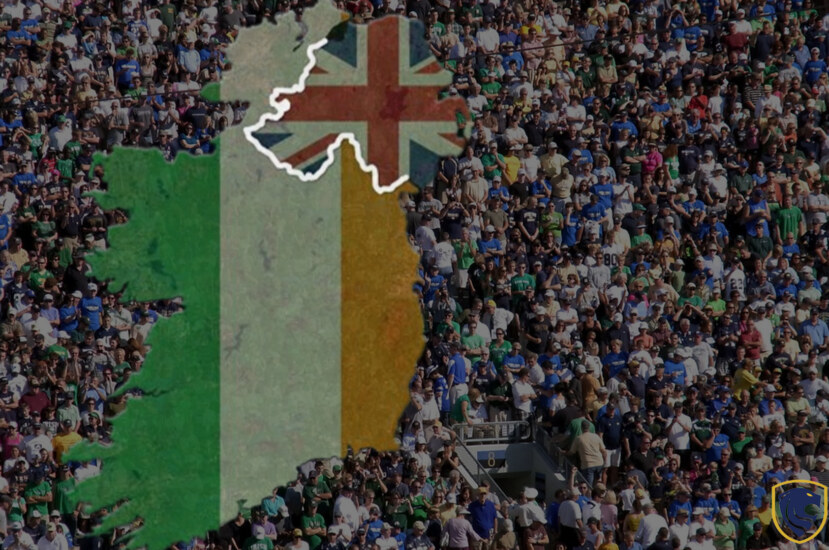Ireland is an island nation located in North Atlantic Ocean facing Great Britain on its eastern side. It’s distance to Great Britain ranges from 11 to 120 miles. However, at present Ireland is split into two as Northern Ireland and Republic of Ireland. The division took place basically on religious differences. Northern Ireland was meant to be a Protestant state and Republic of Ireland was formed for Roman Catholics. Moreover, Republic of Ireland is an independent, sovereign country while Northern Ireland is a state of the United Kingdom.
England ruled Ireland for nearly 800 years as English occupation began in 12th century and its end marked in 1922. The Irish fought time to time through out centuries to free themselves from England.
Home Rule
Under the ‘Acts of Union’ in 1800 Ireland was annexed to Great Britain in order to form the United Kingdom. Consequently, Ireland was ruled from a united parliament from Westminster in London. And the parliament in Dublin was annulled. Irish nationalists opposed this move.
Moderate nationalists were demanding for self-rule from 19th century onwards in which Ireland would have some form of self-rule while being a part of the United Kingdom. After multiple failed efforts to pass a home rule bill, finally one passed in 1914. Due to flare-up of world war 1, it was not implemented.

Home Rule
In these circumstances, another radical group formed Irish Republican Brotherhood. They were not satisfied with home rule and endorsed for independence of Ireland. So, their ideology broke out as an uprising in 1916 which was named Easter Rising.
Easter Rising
Easter Rising began on 24th April,1916. A rebellion group made up of 1600 Irish nationalists combatted against British troops. They were able to get the control of the city’s general post office and several other important places. Even though it was intended to spread across Ireland, it was limited to Dublin. Patrick Pearse was one of the leaders of the group. He declared Ireland an independent republic and proclaimed that a provisional government that consisted of ‘Ireland Republic Brotherhood’ members had been nominated. However, they didn’t get public support as expected.
The British quelled the uprising within a week. The casualties included death of 450 people and more than 2000 injured people. And the Dublin city center was devastated.

Easter Rising
Following the rebellion, the British executed 15 leaders by firing squad. All who supported the uprising directly or indirectly were arrested. So, the number of people arrested exceeded more than 3000. Some of them, about 1800 were sent to England and incarcerated without a trial. And martial law was implemented. These extreme measures to clampdown the rebellion enraged the general public. Even though people were not supportive of rebellion in the beginning due to the deaths and the disruption caused, ultimately, they began to support Irish independent Movement. Easter Rising in 1916 paved the way for the final freedom fight of Ireland.
Ulster Loyalists
Majority of the Northern Ireland were Protestants while the majority of South were Catholic. Northern Irish opposed the home rule union and this group was called the Ulster unionists. They feared discrimination under a Roman Catholic majority rule. They wanted to remain under governance by Westminster in London as England too was a Protestant country.

Ulster Loyalists
Later they formed Ulster Volunteer force to fight against the home rule. As a counter measure, Irish nationalists formed the Irish Volunteer Force to fight Ulster Volunteers.
Sinn Fein
In 1918 general election was held to elect candidates to the parliament of the United Kingdom. The Sinn Fein was a political party in Ireland that fell in line with the struggle for a republic. In the election Sinn Fein secured a bulk of the Irish seats. They won 73 seats out of 105. They got majority vote in all countries except for in ulster dominated areas.

Sinn Fein
The elected members of the Sinn Fein repudiated to attend the UK parliament. Instead in 1918, Sinn Fein convened all their members to a single chamber parliament which they formed in Dublin. And they declared the independence of Ireland.
IRA
The Irish nationalist’s advocacy for home rule wasn’t materialized even though they tried for seven years. So, the Irish volunteer force decided to give a military shape to their organization. Accordingly they formed Irish Republican Army(IRA) in 1919 to fight for complete independence rather than for home rule.

IRA
Irish War of Independence
Irish War of independence started with IRA killing 2 Irish policemen in ‘Tipperary’ on 21st January 1919. The catholic church and people condemned the attack. The British immediately took measures to suppress the movement. Since then, a guerrilla war fare broke out mainly in Cork and Tipperary areas.

Irish War of Independence
Black and Tans
By the time World war had ended in 1918. As a result, an economic downfall took place in Britain. The British army was in disarray. So, the Britain sent former world war soldiers to fight with IRA. They were named ‘Black and Tans’ due to the amalgam of black police uniforms and tan army uniform. Moreover, they were not a disciplined military force. In retaliation for IRA attacks, they shot civilians oftentimes. As a result, the locals began to support IRA
In 1920 the leadership of IRA decided to intensify the war as they didn’t see the desired result. Accordingly, IRA killed 11 British agents. As a counterattack Black and Tans fired at a crowd of civilians at a football match at Croke park, Dublin. After ten days, 17 British soldiers were shot dead by IRA at Cork.

Black and Tans
While the conflict was going on, the government brought up the home rule and passed the Government of Ireland Act in 1920. Further, in this amendment two parliaments were set up, one in north for the Unionists, the other for the nationalists. Both parliaments were accountable for the UK parliament.
Elections in Northern Ireland
People in North gave their assent for the creation of ‘Northern Ireland’ in a referendum. Northern Ireland constituted six countries: Londonderry, Tyrone, Fermanagh, Antrim, Down and Armagh. An election was held in May 1921 to elect members for Northern Ireland Parliament. There were 52 seats to the parliament, and the Unionists won 40 of them. The Ulster Unionist leader, Sir James Craig was appointed as the Northern Ireland Prime-Minister.

Elections in Northern Ireland
Elections for Nationalists
The election for the nationalists was held in May 1921. Sinn Fein could secure 124 seats out of 128. Unionist candidates got 4 seats. Yet Sinn Fein didn’t recognize the parliament. Only 4 unionists attended the parliament. IRA continued to fight for independence. Meanwhile there were constant attacks on Protestants in Northern Ireland by IRA.
Partition
The British government faced intense pressure from homeland to end the war. On 11th July 1921 an agreement was reached to divide the island of Ireland. Michael Collins on behalf of IRA and the British government signed the ‘Anglo-Irish Treaty’ in which the Dublin Home-Rule Parliament was replaced by the Government of Ireland.

Elections for Nationalists
However, many nationalists sought the Ireland under one administration. It’s for their dismay that Ireland was divided. The move made some consider Michael Collins a traitor as he failed to consult others before signing the treaty.
The newly created country was named ‘Irish Free State’. Also, it became a British commonwealth. The first Prime Minister of the Irish Free State was Sinn Fein leader, Eamonn de Valera.
The Northern Ireland which constitutes of six countries didn’t want to function as a free state, but opt to remain a part of Britain.
It was on 18th April,1949 that Ireland was recognized as an entirely independent republic.




